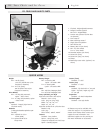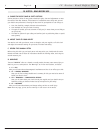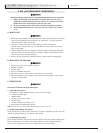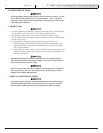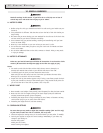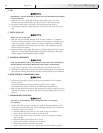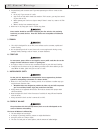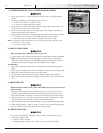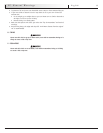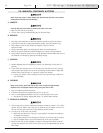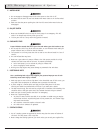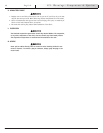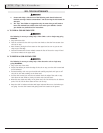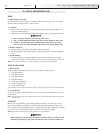
930756 Rev. A
3. Turn off all power to your chair. If you fail to do so, you may touch the joystick and
cause your chair to move when you do not expect it.
4.
Firmly grasp an armrest with one hand. This will help to prevent a fall if the chair tips.
P
. DRESSING OR CHANGING CLOTHES
Be aware that your weight will shift if you dress or change clothes while seated
in this chair. To make the chair more stable, rotate the front casters until they are
f
orward.
Q. OBSTACLES
Obstacles you may have to overcome in daily use include door thresholds, lifts,
ramps and hazards such as potholes and broken pavement. These can damage your
chair and may cause a fall, tip-over or loss of control.
1. Be aware that thresholds are very dangerous. (Even a small change in height may
stop a caster wheel and cause your chair to tip). You may need to:
• Remove or cover threshold strips between rooms.
• Install a ramp at entry or exit doors.
2. Keep your eyes moving when you ride; scan the area well ahead of your chair.
3. Make sure the floor areas where you use this chair are level and free of obstacles.
4. To help correct your center of balance:
• Lean your upper body forward slightly as you go up over an obstacle.
• Press your upper body backward as you go down from a higher to a lower level.
R. DRIVING IN REVERSE
Use extra care when you drive your chair in reverse. You may lose control or fall if
one of the rear wheels hits an object.
1. Operate your chair slowly and at an even speed.
2. Stop often and check to make sure your path is clear of obstacles.
S. RAMPS, SLOPES & SIDEHILLS
The center of balance of your chair changes when you are on a slope.
NOTE– “Slope” includes a ramp or sidehill. Your chair is less stable when it is at an angle. Never use
this chair on a slope unless you are sure it is safe.
When in doubt, have someone help you.
Beware Of:
1. Steep slopes. Do Not use this chair on a slope steeper than 10°.
2.
Wet or slippery surfaces (such as when ice, snow, water or oil film is present). A loss
o
f tr
acti
on m
ay cause a f
all or tip-over.
3.
A chan
g
e in gr
ad
e on a slope (or a lip, bump or d
epr
essi
on). Th
ese may cause a fall
or tip-over
.
4.
A d
r
op-o
ff at th
e bottom of a slope. (A drop-off of as small as 3/4 inch can stop a
fr
on
t caster an
d cause th
e chair to tip f
orwar
d).
VI. General Warnings
13
English



